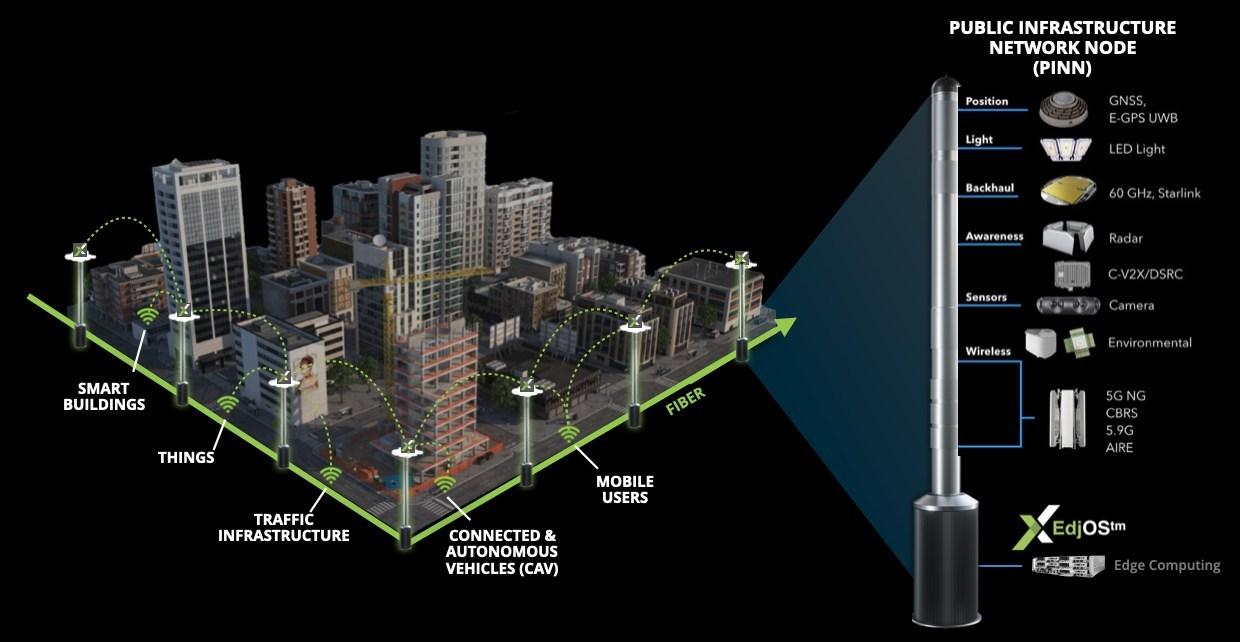
We stand at the dawn of a new age in city planning. The Internet of Things has allowed us to conceive of a new type of development, where everything is connected and technology makes everyone’s life easier. It sounds like a fantasy, but the Autonomy Institute is planning an intelligent infrastructure pilot with the Texas Military Department to enable the collaboration of “autonomous vehicles, smart cities and connected things.”
Alongside partners EDJX and Atrius Industries, the plan is to use Austin's Camp Mabry as a testbed for the new technology, which is being dubbed Public Infrastructure Network Node or PINN. Jeffrey DeCoux, Chairman and Fellow, Autonomy Institute, said, “Investment in a 21st century intelligent and autonomous infrastructure is among the highest priorities for stimulating economic expansion, national security and job growth. Edge computing, 5G wireless, Intelligent Transportation Systems, Resilient Alternative Positioning, Navigation Timing (APNT,) and resilient electrical grids will drive the largest infrastructure buildout in our nation's history. Digital Edge will drive the world economy.”
“The future of Industry 4.0 depends on a plurality of multi-tenant sensors and processing capabilities located close to users, machines and devices,” added John Cowan, EDJX CEO. “EDJX and Atrius are actively developing real-world solutions at the edge with the world's foremost innovators and thinkers in the field of autonomous and connected systems as part of the PINN pilot release.”
It’s believed to be the first unified open standard to incorporate 5G wireless, Edge Computing, Radar, Lidar, Enhanced GPS, and ITS in a single unified system. It’s designed to rapidly deliver a multitude of sensors and computing capabilities required to support autonomy and the IoT. It could solve the current challenge of delivering low-latency computing and sensors at the edge while avoiding unsightly urban infrastructure sprawl. Connected and Autonomous Vehicles in particular and many other smart cities applications require sub-10 milliseconds latencies and high bandwidths to operate safely. PINNs are placed 300 metres (1,000 feet) away from each other, appear similar to a light post and are packed with sensors, communications and edge computing equipment.
EDJX and Atrius are collaborating to develop edge-enabled IoT software and data solutions on the EDJX platform installed on interconnected PINNs consistent with the direction of the Texas Military Department for the pilot launch. The partners are hoping for a priority sequence of city-by-city rollouts. The first PINNs are scheduled to come online soon.
The plan is to enable optimised traffic management, autonomous cars, industrial robotics, autonomous delivery, drones that respond to 911 calls, automated road and bridge inspection, smart city and national security applications.
The goal is to have tens of thousands of PINNs deployed by mid-2022. The team is inviting city planning departments, IoT developers and other interested parties to apply to the limited PINN Beta program (click here for more). Selected applicants will be granted early access to the hardware, sensors, edge computing and EDJX platform software to help develop and test new solutions.
